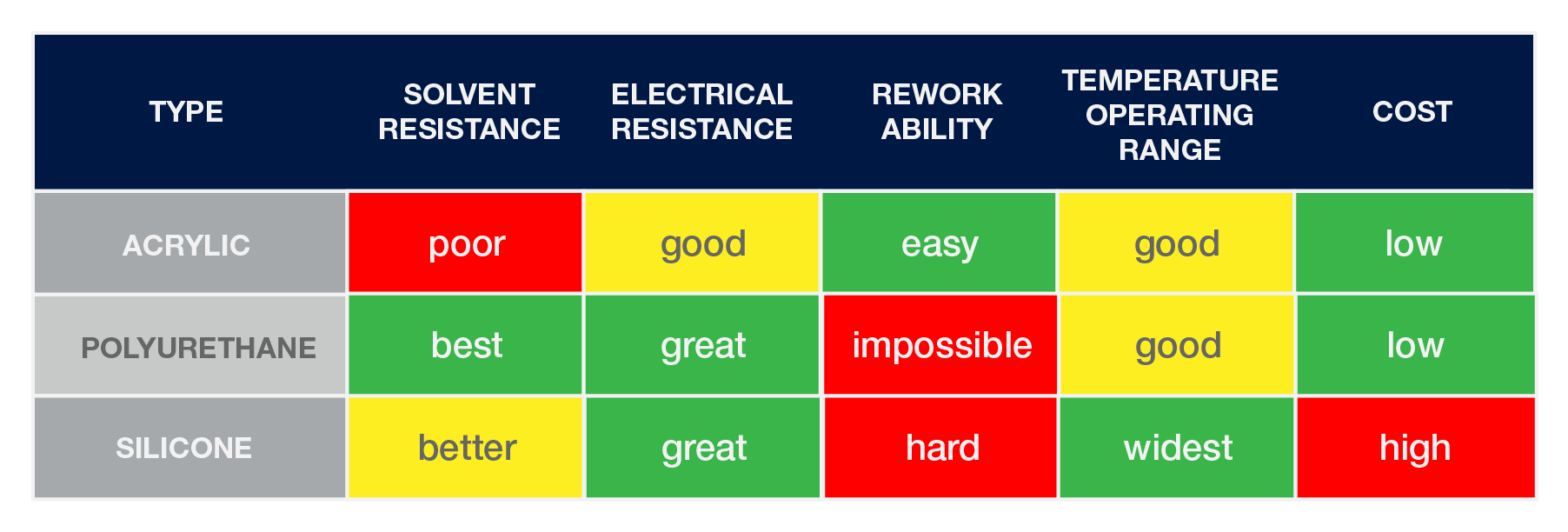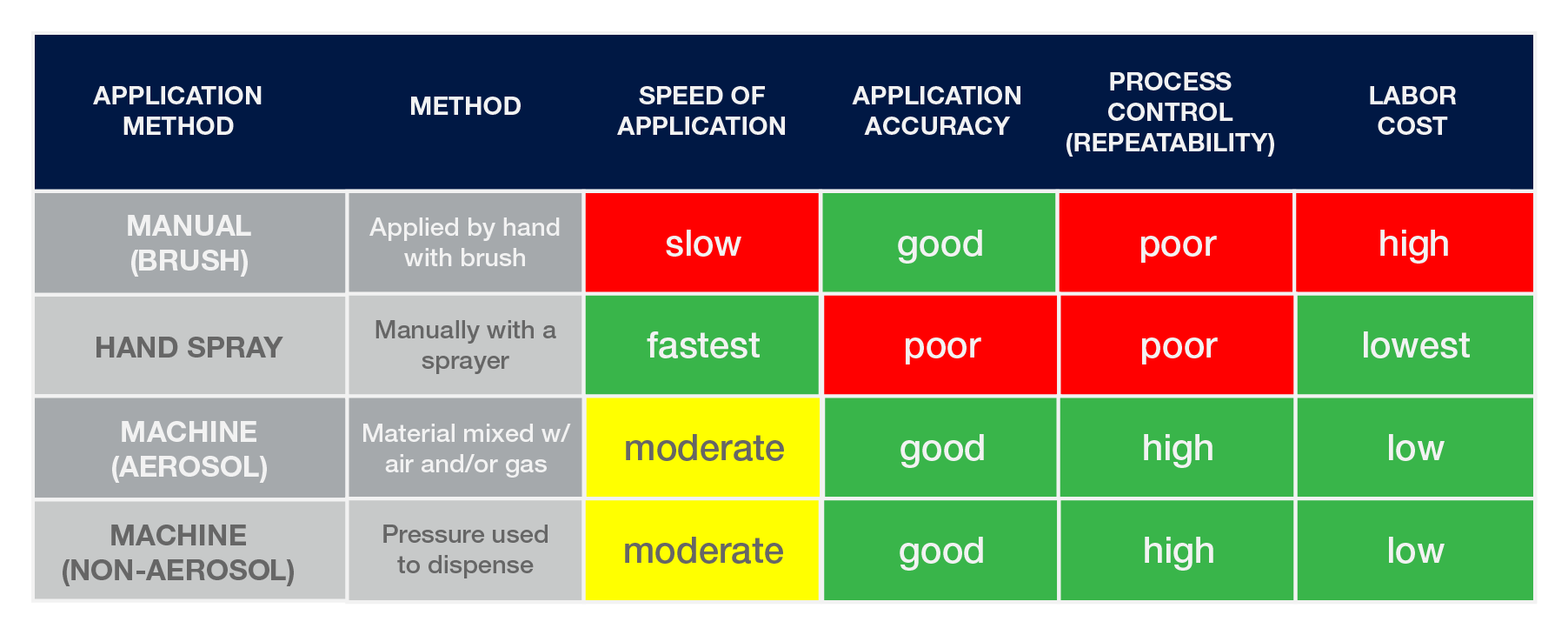Why Conformal Coat?
The function of circuit assemblies can deteriorate due to external factors such as moisture, salt spray, chemicals, and temperature extremes. Conformal coatings can be used in a wide range of environments to protect against damaging effects like corrosion, mold growth, and electrical failures caused by outside agents. This protection can then permit a tighter conductor spacing which allows engineers the ability to create more compact designs without sacrificing reliability. Conformal coating can therefore yield the same environmental protection as potting with the added advantage of rework ability; still, potting does increase the durability of the electronic assembly while still allowing for some level of repair or rework.
What is a Conformal Coat?
Conformal coat is a protective coating that conforms to the electronic assembly, and they can be derived from several different compounds. The types of coatings detailed below are considered one part and are the most commonly used coatings in the electronics industry. They are categorized here by resin base. These materials provide differing levels of resistance to environmental conditions but are all semi-permeable and do not fully waterproof and seal the electronic assembly. The operational requirements of the electronics will determine the proper coating choice for your application.
Types of Conformal Coats

ACRYLIC
Acrylic coatings provide the least protection of any of the coatings discussed here but are distinguished from other coatings by ease of removal. This coating can be removed by a variety of solvents, making economical rework and even field repair. Acrylic coatings are easy to work with and dry quickly through solvent evaporation at room temperature, and they are good in applications requiring moisture protection against elements like high humidity and salt spray. Although they are not suitable in applications requiring chemical resistance, they do provide high dielectric strength and operate well in a wide temperature range while still maintaining flexibility. These coatings are popular in marine, consumer electronics, and some medical industries.
Pros:
- Moderate in cost
- High dielectric strength
- Good adhesion
- Easier to rework
Cons:
- Limited resistance to solvents
POLYURETHANE
This coating is known for excellent moisture and chemical resistance. However, this quality makes repair and reworking of the coated electronics a challenge. Polyurethane operates well in a wide temperature range and maintains flexibility at very low temperatures and is popular in industries like aerospace, automotive, and medical.
Pros:
- Low in cost
- Flexible covering a wide operating temperature range
Cons:
- Limited resistance to solvents
SILICONE
The differentiator between silicone coatings and the others discussed here is solid chemical, moisture and salt spray resistance over the widest temperature range. Silicone coatings excel in high humidity environments like outdoor applications. A silicone coating provides the highest chemical resistance and protection in extreme environments, and they are ideal for high/low temperature applications requiring maximum flexibility. Silicone is popular in industries like aviation, consumer electronics, and energy.
Pros:
- Superior protection in a wide temperature and humidity operating range
- High flexibility
Cons:
- High in cost
- Hard to rework
Methods of Coating Application
Notes on Coating Application
● Precision, machine dispensing eliminates the need for most masking/protecting of certain
components.
● Coating material contains a UV tracer, so blacklights are used to review coverage.
● Oven drying is quicker than air drying and ideal for two-sided applications, but air drying
produces less bubbles. Also, forced drying allows better venting for fumes and odors.
● Keep-out areas can be protected with boots or masking tape. Note that taping is a manual, labor-intensive process, and custom boots can reduce labor cost in higher volume applications.





.jpg?width=176&height=56&name=MR_associatedNetwork_logo%20(1).jpg)